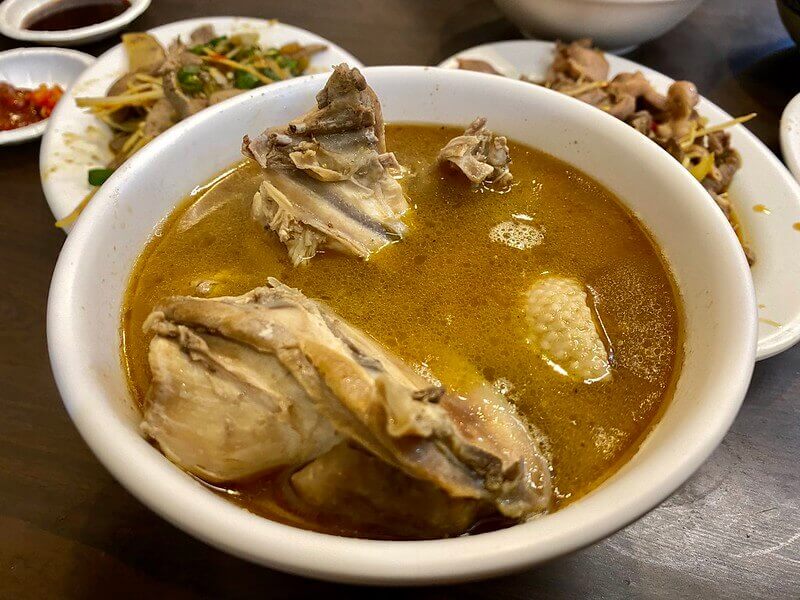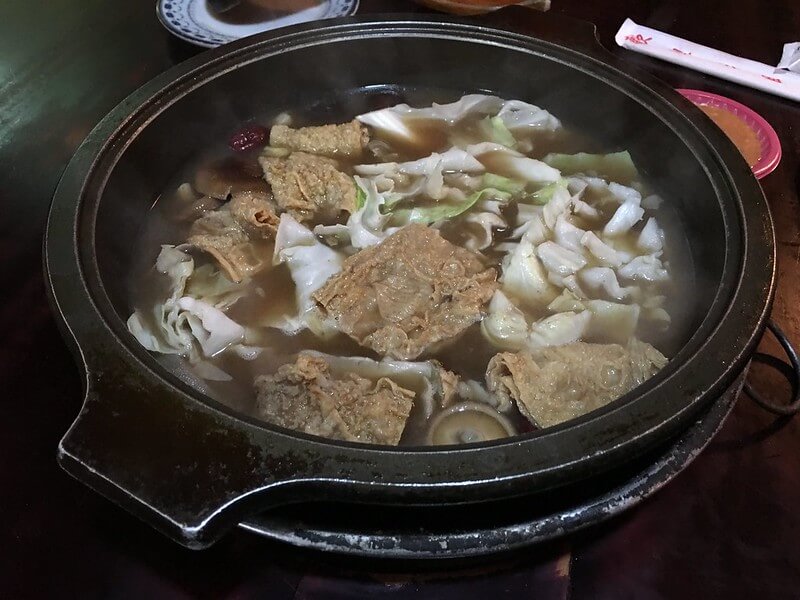It may be a subtropical island, but Taiwan still gets a winter of sorts. Starting around late November and early December, Taiwan’s winter sees an average low temperature of 13 degrees Celsius, which doesn’t sound too cold, but if you take into account the humid climate, it is more than enough to have you reaching your thick winter jacket. You’ll probably be surprised to know that it even snows in Taiwan, which when you think about the scorching summer heat that cooks the island between June and August, seems unimaginable.
The traditional lunar calendar divides the year into 24 solar terms, with Lidong (立冬), falling in November, signifying the start of winter for many East Asian cultures. During the winter months, it is very popular for people in Taiwan to eat certain types of foods which in traditional Chinese medicine (TCM) are known for their warming qualities. This is known as siqi (四氣), a concept that divides foods into four natures: cold, cool, warm, and hot. Warm and hot foods include beef and ginger, while dishes such as salad and cheese are considered cold. In an attempt to balance the immune system, strong believers in the properties of TCM will try to avoid cold foods as much as possible during the winter months.
With Taiwan’s winter right around the corner, we’ve put together a list of warming meals that are commonly eaten across the country in the winter months. From hot pots to sweet potatoes, here are six winter warmers to eat in Taiwan. (Read more: Warming, hearty, comforting end-of year hot pot gatherings)
Sesame Oil Chicken Soup (麻油雞)
Nothing warms you up quite like a hot bowl of soup. Cooked with sesame oil, ginger and rice wine, this chicken soup is full of calories and flavor and is perfect for a cold winter’s day. The aroma is mouthwatering and the combination of the rice wine with the sesame oil, along with tasty chunks of chicken, make for a truly wonderful dish. All of the soup’s ingredients have warming properties, which are said to help increase circulation – perfect for warming your fingers and toes – while the soups medicinal properties are also said to be ideal for women who’ve recently given birth.

Mutton Hot Pot (羊肉爐)
Everyone in Taiwan knows that hot pot is the perfect winter meal. However, mutton hot pot uses rice wine as the base for its broth, which takes the meal to the next level. According to TCM, lamb is another warm food, boosting the immune system, improving circulation and even upping milk production in new mothers. Throw generous servings of tasty veggies and tofu into the mix and a mutton hot pot is not only delicious, but also great for your health. (Read more: 5 unique twists on Taiwanese hot pot)

Si-Shen Tang/Four Tonics Soup (四神湯)
Also known as four herbs soup, or four tonics soup, this soup is definitely good for what ails you. Mild in flavor, it is popular with Taiwanese of all ages, being enjoyed here much more widely than back in its native Fujian. A staple at night markets, the soup can usually be found being sold alongside a meat dish such as guabao (刈包) or meat-filled glutinous rice dumplings (肉粽). The main ingredients in the soup are Chinese yam (淮山), gorgon (芡實), lotus seed (蓮子), and a type of mushroom/fungus called poria (茯苓), each boasting their own medicinal properties.
Glutinous Rice Balls (湯圓)
Formally referred to as tangyuan, the typical Taiwanese version of these rice balls are stuffed with a mixture of ground pork, celery, shiitake mushrooms, dried shrimp, and shallots. Traditionally eaten during Lantern Festival and the Winter Solstice (冬至), the main ingredient is glutinous rice flour and variations of this treat include a sweet sesame filling or a red bean filling, often served as a dessert, particularly in Mainland China. However, we want to focus on the warming savory version enjoyed here in Taiwan – very similar to the traditional meat version from Ningbo, eastern China – which can be eaten as part of a warming soup. Soft and tender, for many Taiwanese, nothing says winter like biting into tangyuan. (Read more: Handmade tangyuan – each one a treasure unto its own)
Hot Grass Jelly (燒仙草)
A popular dessert that many Taiwanese people grew up eating, grass jelly is widely enjoyed across South East Asia. Usually a cold dish, the hot version of the dessert is unique to Taiwan. Made primarily of dried grass jelly twigs and leaves, as well as sugar, many people add taro balls (芋圓), tapioca pearls (珍珠粉圓) and red bean (紅豆) to their recipe to enhance the flavor. Some even add roasted and salted peanuts to their hot grass jelly to not only add texture, but to also neutralize the cooling effects of the grass jelly itself. While grass jelly is a normal and regular flavor across this part of Asia, in the West it is much less so, as you’ll be able to tell from the above video.
Baked Sweet Potatoes (烤蕃薯)
Few snacks are more synonymous with Taiwan than a nice hot sweet potato. Eaten across the island since the early 1600s, they were a huge part of the indigenous people of Taiwan’s diets and nowadays can be found roasting away on street stalls, at night markets or even in convenience stores such as 7-Eleven and Family Mart. If you’re after something quick, tasty and warming, you can’t go far wrong with a baked sweet potato.












